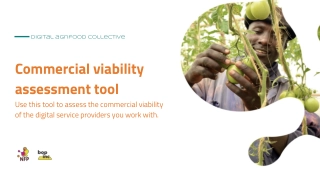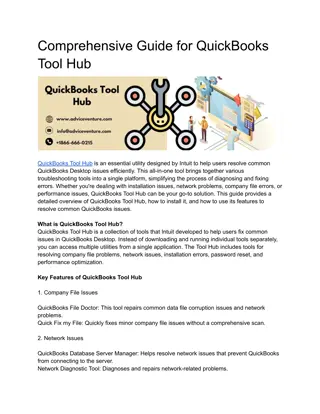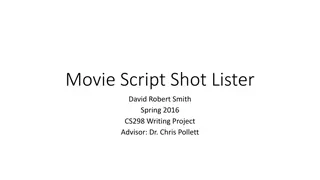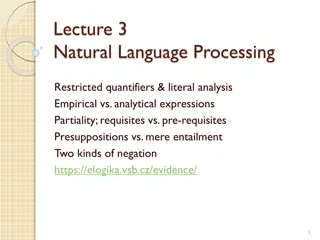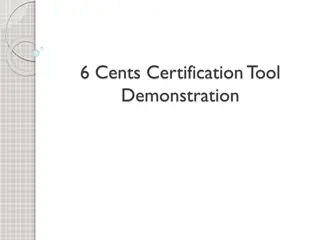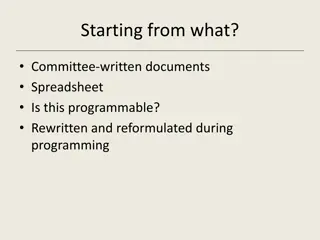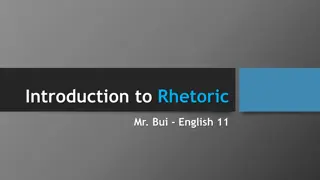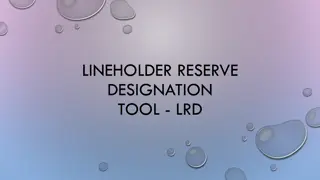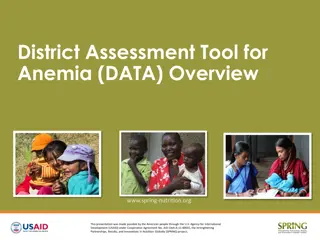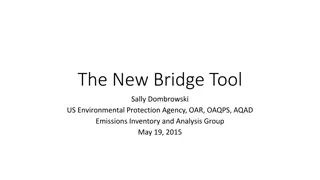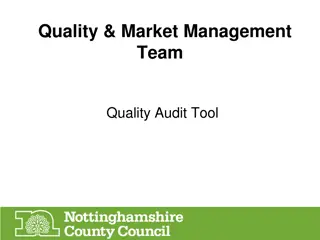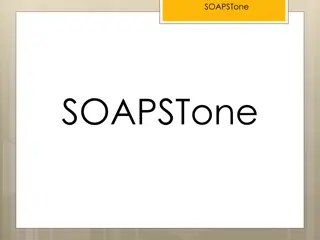SOAPSTone Analytical Tool
Analyze the elements of SOAPSTone - Speaker, Occasion, Audience, Purpose, Subject, and Tone - to gain insights into the text's context and rhetorical strategies. Explore how the speaker's background, persona, and the piece's occasion influence the message conveyed to the audience. Dive into questions that unveil the nuances of each element and enhance your comprehension of the text's intended impact.
Uploaded on Feb 16, 2025 | 1 Views
Download Presentation

Please find below an Image/Link to download the presentation.
The content on the website is provided AS IS for your information and personal use only. It may not be sold, licensed, or shared on other websites without obtaining consent from the author.If you encounter any issues during the download, it is possible that the publisher has removed the file from their server.
You are allowed to download the files provided on this website for personal or commercial use, subject to the condition that they are used lawfully. All files are the property of their respective owners.
The content on the website is provided AS IS for your information and personal use only. It may not be sold, licensed, or shared on other websites without obtaining consent from the author.
E N D
Presentation Transcript
SOAPSTone Analytical Tool
What is SOAPSTone? Speaker Occasion Audience Purpose Subject Tone
Speaker A SPEAKER aims to create a particular persona. -A persona is the personality that the speaker projects and that the audience interprets from the work. A speaker also has a real-life background, a personal history. Analyze both persona and personal history to arrive at a complete understanding of a speaker.
QUESTIONS FOR ANALYZING SPEAKER What is the background of the speaker? -This can include many things; age, gender, race, economic status/class, profession, political party, religious affiliation, personal philosophies and beliefs, etc. What persona is the speaker creating? -That is, what personality is he trying to project to the reader/viewer? Speakers want to appear credible -they want us to believe them, trust them, maybe even like them. -How does the speaker accomplish this? If the persona is different from the real person behind the mask, the actual author, why is this? Appeals based on the persona of the speaker are known as ethical appeals, or ethos.
Occasion Remember that naming the occasion is not simply identifying the time/place. -context, aim, and purpose all contribute to occasion.
QUESTIONS FOR ANALYZING OCCASION What is the genre of the piece? -Is the text a memory? Speech? Letter? Critique? Argument? About what event? -Where and when does the text take place? When was the piece written? What events occurred in the world at that time that may have influenced the speaker to create this piece? What were the prevailing beliefs at the time? What were the major philosophical outlooks? Scientific outlooks? Political outlooks? Social problems and trends?
Audience The speaker or writer appeals to the audience through the three appeals; logos, ethos, and pathos. Audience groups can vary drastically and can fall into multiple categories. -For example, we might group audiences by age, by reading habits, by ideological or political beliefs -It s up to you to determine the intended audience based on the text, the context, and your knowledge of the speaker.
QUESTIONS AND CONSIDERATIONS FOR ANALYZING AUDIENCE Who is the intended audience? -Whose attention does the speaker seek to gain? -To whom is the writer speaking? -For example, in MLK s I Have a Dream, he is not only speaking to African Americans, but to readers who may harbor racial prejudices perhaps to policy makers. -Is the intended audience general or specific? Also treat this as the flip-side of the speaker: what does the audience believe? -What are their biases? -What do they like, dislike, want? -What are the philosophies and belief systems among audience members? Look for evidence in the text (and via inference) to support your interpretation of the intended audience.
Purpose (or intension) Purpose is what the speaker wants to happen as a result of the text. -what he or she wants the audience to believe or do after hearing or reading the text. Some speakers know their intention right from the start -in other situations, the intention becomes clear as the text evolves
Purposes: explicit and implicit Purposes may be explicit or implicit (stated or merely implied.) -In either case, base your analysis of the purpose on all of the information you have so far gathered on the speaker, audience, and occasion -These offer clues as to the purpose of the piece. If the piece contains a thesis, state the thesis (either explicit or implicit). -Do the same for any claims you find.
Purposes: modes and genres Think about the modes and genres of writing and the purposes behind those modes. -Authors write to entertain, to inform, to persuade, to critique, to complain, to explain, to reflect, to describe, sometimes to simply express a truth. -Often, writers have a dual purpose -Ex: to entertain and to teach a lesson about accepting one s culture. It is not enough to say to inform -to inform about what? To complain about what? To explain what? -Why did the author use this type of communication and not some other to convey his or her point?
Subject The subjects of texts are often abstract -Ex: the right to die, racism, poverty, conformity, etc. They are concrete just as often -immigration reform laws, the Iraq War, application of the death penalty to a particular case, etc. The subject is the issue or idea at hand, not the character or specific situation. Be specific about the subject in your own writing and in your analysis -your claims must be arguable and supportable!
TONE Tone is the speaker s attitude towards the subject and audience. DO NOT confuse tone with mood -mood is the audience side of the issue -tone is analyzed from the perspective of the speaker.


